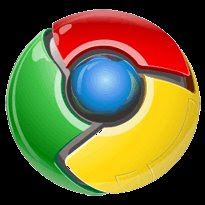
Chrome is Google's attempt to make the browser disappear and to focus on the applications and pages users are viewing, rather than on the border with its tools. Some of Chrome's basic underpinnings are quite novel, but people will recognize other features as they exist in other, open-source browsers on the market today.
Currently only for Windows, Chrome is blazingly fast and is easily the quickest browser available. Based on Webkit, the same open-source engine that powers Apple Safari and Google's Android mobile platform, Chrome's interface is a drastic departure from other browsers. Instead of the traditional toolbar, Chrome puts its tabs on top. Moreover, the tabs are detachable: "tabs" and "windows" are interchangeable here. Detached tabs can be dragged and dropped into the browser, and tabs can be rearranged at any time. By isolating each tab's processes, when one site crashes, the browser does not.
Within each tab are individual controls, such as forward and back buttons. The search box and the address bar have been fused into a hybrid "Omnibox." The Omnibox includes not only suggestions for URLs culled from your browser's history, it also includes search suggestions from your search engine, and remembers site-specific search engine results. There's also Application Shortcuts, a feature that allows you to create desktop icons for Web-only applications, such as Gmail or Calendar. The stealth mode, Incognito, lets you surf without the history recording cookies.
Chrome lacks plug-ins, and there's the potential for high memory usage given that each tab is its own process. If you're addicted to Web apps and a need for speed, though, Chrome just might be the shine your browsing experience has been looking for.
0 comments:
Posting Komentar
Terima kasih atas komentar atau sarannya.
Makasih ya udah komentar | Kembali ke atas